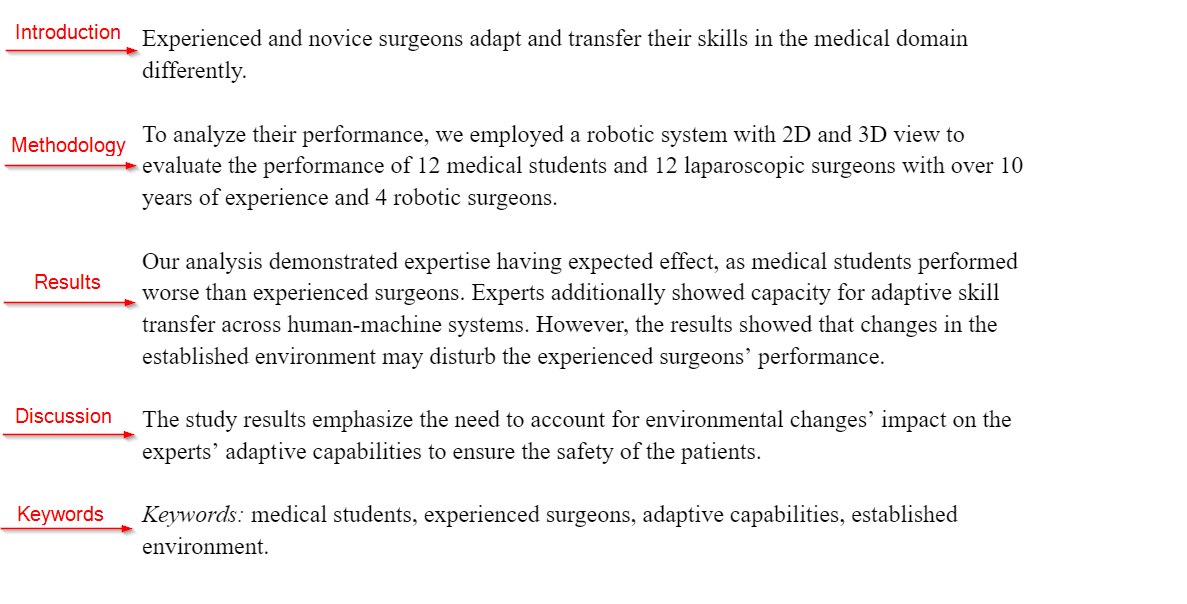Set right after the title page, the term paper abstract is a critical part of your work that helps make an excellent first impression on professors and other readers. Although it is the last piece of the term paper structure you write, do not trivialize the writing process. Otherwise, you risk making mistakes that will detract from your term paper and reduce your chances of scoring a high mark. Besides, abstract writing is a helpful soft skill to put on your resume, invaluable in academia and other sectors.
What Is a Term Paper Abstract?
An abstract is another word for a short summary. It’s a one-page condensed version of your paper that can stand independently. Although word count requirements differ, an abstract is usually between 100 and 300 words long, including the keywords list.
When it comes to the abstract, term paper is not the only assignment to use it. Research papers, scientific articles, and non-fiction books require an abstract because it fulfills two critical goals. One, the abstract helps readers find your work if it is indexed in online repositories or databases. Second, a one-page summary helps readers quickly decide if the rest of your paper is worth reading. Sometimes, if the abstract is detailed enough, the readers may not need to finish the paper at all.
Which Abstract Type to Use for Your Paper?
Two abstract types are common in academia:
- Descriptive abstract. The shorter of the two types, descriptive abstract can be under 100 words long. It characterizes the paper’s contents and its impact without going into detail. Considering their lack of objective data, descriptive abstracts are rarely used.
- Informative abstract. While there is no universal structure for informative summaries, they usually include the highlights of every section of the paper, such as the literature review, methodology, results, discussion, and conclusion. Commonly used in term and research papers, informative abstracts can span up to 300 words.
How to Write an Abstract for a Term Paper Step by Step
Prewriting Tips
Although it’s tempting to speed through the term paper abstract, you should treat it with the same care and precision as the rest of your piece. So complete your prewriting checklist:
- Check the abstract requirements (formatting style, word count, etc.).
- Select the abstract type for your term paper (descriptive or informative).
- Skim abstracts across your sources to get into the right mind frame.
- Consult your TA or professor if you have any questions about the abstract.
Tips for Writing an Abstract
Introduction
The first two to three sentences of the abstract should condense the essence of the term paper introduction. Start by highlighting the research topic or question. After that, you can include a sentence to broadly cover the background information and emphasize the contradictions or gaps in knowledge. Finally, when writing an abstract, establish the relevance and importance of your study.
Pro tip: Present or past tense is appropriate for this part of the abstract. Do not use the future tense, as you’ve already done your work, and the abstract is the section you write last.
Methodology
The following three to four sentences should describe your research methodology. You don’t have to justify your choice of methods. Instead, list them and detail sample size, population, tools, techniques, and results validation methods. Use present or past tense, as you did for the first section of the abstract.
Results
Results comprise the most valuable part of your abstract. At this point, you should only list the critical results, as all numbers and facts may not fit within the word count limit. Results analysis and discussion come later, so only focus on actual outcomes achieved throughout the study. This section may be three to four sentences long and use past or present simple.
Discussion
Also known as the conclusion, the last section of the abstract should include the final takeaway from the study. First, explain if you managed to prove your hypothesis or not. Next, highlight the limitations of the results and provide recommendations for further studies or practical implementation. Like the introduction, this section is usually two to three sentences long, written in the past or present tense. However, the future tense may also be appropriate for recommendations and further research opportunities.
Keywords
Keywords requirements differ depending on the formatting style requirements. The MLA and APA style guidelines include specific instructions for the number of keywords, formatting, etc. Remember that keywords can be indexed along with other publication data and help other researchers find your term paper. So if you wish for a broader audience, choose your keywords wisely.
Pro tip: Try listing the keywords before writing the abstract. Seeing them will help you structure the piece and stay on topic.
Post-writing Tips
Now that we’ve gone over the advice on how to write an abstract, let’s review the foolproof post-writing routine:
- Ask a friend to read the abstract and provide constructive criticism.
- Edit and proofread the abstract to ensure it meets the requirements.
- Check your work against the formatting guidelines.
- Get a professional editor to polish the final draft if the paper is critical for your GPA.
Pro tip: Use the checklist at the end of this post to perform the final revision before submission.
How to Shorten the Abstract to Meet the Word Count Limit
If your abstract is too long for the word count requirements, highlight all the critical pieces of information throughout the abstract and remove or rephrase the rest. There are always ways to make your sentences concise. For instance, sentences in active voice are usually shorter than passive voice ones. If that’s not enough, rewrite the core phrases by combining several points into one to reduce the word count. You may have to delete some parts, so decide which issues take priority.
Pro tip: Consider removing “This paper” or “This study” from your first sentence. Jump straight to the point and skip the unnecessary extra words.
Term Paper Abstract Sample
Consider the following term paper abstract example to help you put our recommendations in perspective. It should give you a better grasp of the concepts and help you put them into practice.
Experienced and novice surgeons adapt and transfer their skills in the medical domain differently. To analyze their performance, we employed a robotic system with 2D and 3D views to evaluate the performance of 12 medical students and 12 laparoscopic surgeons with over ten years of experience and four robotic surgeons.
Our analysis demonstrated expertise had the expected effect, as medical students performed worse than experienced surgeons. Experts additionally showed the capacity for adaptive skill transfer across human-machine systems. However, the results showed that changes in the established environment might disturb the experienced surgeons’ performance. The study results emphasize the need to account for environmental changes’ impact on the experts’ adaptive capabilities to ensure the safety of the procedures.
Keywords: medical students, experienced surgeons, adaptive capabilities, established environment.

FAQ
How do you write a term paper abstract?
Copy and paste the core points from the paper’s introduction, methodology, results, and discussion sections. Then, condense them to fit the word count requirements and include a list of keywords at the end. Or else, you can purchase a term paper from ordertermpaper.net and get a polished abstract and the rest of the text without hassle.
In a term paper, how is an abstract referenced?
Avoid references in the abstract, as its primary focus should be on your research and results, not background information or literature review. Instead, think of an abstract as an independent piece of writing.
Which is first in a term paper: introduction or abstract?
The abstract comes before the introduction. It follows directly after the title page and acknowledgments (if applicable) and before the table of contents or the introduction if you don’t have one.
Abstract Writing Checklist
- The abstract fits on one page and is within the word count limit
- The abstract meets the term paper formatting style requirements
- The abstract is between the title page and the table of contents
- The abstract is free of references and citations
- There are no tables, figures, or diagrams in the abstract
- The abstract starts with study objectives and relevance
- The methodology includes sampling, tools, equipment, and validation methods
- The results summarize the critical research outcomes
- The discussion highlights study takeaways, limitations, recommendations
- The list of keywords is relevant to the abstract and the study
- The abstract is detailed enough to be understood without reading the whole paper



Comments (0)
Thank you for your comment! 🌟
It has been submitted and is awaiting moderation. Stay tuned—it will be visible soon!